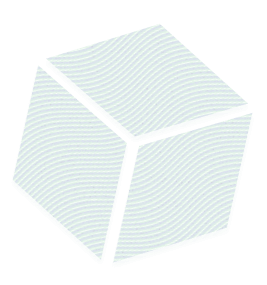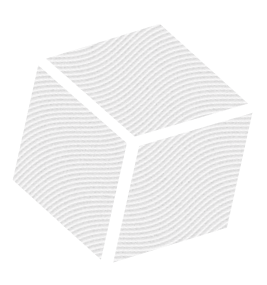
Why Choose Us as Your Roth IRA Provider?
At IRA Financial, our Self-Directed Roth IRA custodians provide expert support, transparent pricing, and a seamless investment experience.
No Hidden Fees
No commissions or surprise charges.
24,000+ Clients
Serving investors in all 50 states.
Expert Support
Live chat available 8AM–6PM Central Time.
Flexible Investing
Manage assets or have us handle them.
Industry Expertise
Led by Roth IRA specialists.
Dedicated Focus
100% Self-Directed IRA solutions.

Self-Directed Roth IRA
- Best value self-directed solution
- Invest in almost anything you want
- Enjoy tax-free withdrawals during retirement
- No transaction or asset value fees
- Choose custodian or checkbook control
Checkbook Control
$999
setup fee
$495
annually
Custodian Control
$0
setup fee
$495
annually
How to Open a Self-Directed Roth IRA
A Self-Directed Roth IRA lets you take charge of your retirement investments. Open an account easily and start diversifying on your terms.
The Benefits of a Self-Directed Roth IRA
Tax-free growth and withdrawals
Your Roth IRA grows tax-free, and qualified withdrawals (after 59½ and five years) are completely tax-free.

Built-in estate planning benefits
Your Roth IRA can be passed on to heirs tax-free, making it a powerful wealth-building tool.

No Required Minimum Distributions
Unlike a Traditional SDIRA, a Self-Directed Roth IRA does not require withdrawals at age 73, allowing assets to grow indefinitely.

Broader investment choices
Move beyond stocks and bonds to invest in alternative assets like real estate, cryptocurrency, private equity, precious metals, and more, expanding your opportunities for growth.

Direct investment control
Choose where and how to invest without relying on traditional brokerage firms, giving you full authority over your portfolio.

Potential Emergency Fund
Access your Roth IRA contributions at any time—tax-free and penalty-free—providing flexibility if unexpected expenses arise.

Custodial support
An IRA custodian handles administrative tasks and facilitates transactions while you maintain full decision-making power.


Our Roth IRA vs Other IRA Companies
Many Self-Directed IRA custodians charge percentage-based fees that increase as your investments grow—reducing your returns over time. At IRA Financial, we offer a flat, predictable pricing structure with no hidden costs.
| IRA Financial | Other Providers | |
|---|---|---|
| Flat Annual Fee | Yes | No |
| $0 Account & Transaction Fees | Yes | No |
| $0 Admin & Processing Fees | Yes | No |
| Expert-Guided Investments | Yes | No |
| Guaranteed IRS Audit Protection | Yes | Yes |
| Annual Tax Consulting | Yes | No |
| Annual Reporting & Filing Service | Yes | No |
Book a Consultation
Schedule a free consultation with a member of our team to explore how opening a self-directed retirement account can unlock your ability to invest tax-free in a variety of alternative assets.
See What Our Clients Have to Say

What Alternative Assets Can You Invest in with a Self-Directed Roth IRA?
A Self-Directed Roth IRA allows you to diversify beyond traditional stocks and bonds. Popular investment options include:
Real Estate
Residential, commercial, raw land, and rental properties.
Cryptocurrency
Bitcoin, Ethereum, and other digital assets.
Precious Metals
Gold, silver, and other IRS-approved metals.
Tax Liens & Deeds
Acquire property liens for potential returns.
Private Equity
Invest in startups, private companies, and venture capital.
Private Placements
Invest in a non-public company through the sale of securities.
Self-Directed Roth IRA FAQs
Answers to some of the most commonly asked questions about Self-Directed Roth IRAs. You can check out our full-list of SDIRA FAQs here.
What is a Self-Directed Roth IRA?
A Self-Directed Roth IRA is a retirement account that allows you to invest in a wide range of alternative assets—real estate, cryptocurrency, private equity, tax liens, and more—while benefiting from tax-free growth and tax-free withdrawals in retirement.
Unlike standard Roth IRAs from banks or brokerages, a Self-Directed Roth IRA gives you full control over your investment choices, but requires a Roth IRA custodian to hold your assets and ensure IRS compliance.
How much can you contribute to a Roth IRA?
For 2025, you can contribute up to $7,000 plus an additional $1,000 catch-up contribution if you are age 50 or older. Income limits apply for direct Roth IRA contributions. High earners can use a “Backdoor Roth IRA” strategy to contribute.
Do Self-Directed Roth IRAs have Required Minimum Distributions (RMDs)?
No. Unlike Traditional IRAs, Roth IRAs do NOT require withdrawals at age 73. Your funds can grow tax-free indefinitely, making it a powerful tool for long-term wealth building and estate planning.
Can I have multiple Roth IRAs at once?
Yes, you can have multiple Roth IRAs, including a mix of both Traditional and Roth IRAs. However, your annual contribution limit applies across all accounts.
What happens to my Roth IRA if I pass away?
Your Self-Directed Roth IRA can be inherited tax-free by your beneficiaries, depending on the circumstances:
- Spouses – Can transfer the account into their own Roth IRA and continue tax-free growth.
- Non-Spouses – Must withdraw funds within 10 years but typically do not owe income taxes on the distributions.

Ready to plan for your future?
Take control of your retirement by investing in alternative assets like real estate, cryptocurrency, businesses, and more. Start creating wealth today by opening an account.
Related Articles


How to Purchase Real Estate with Roth IRA
